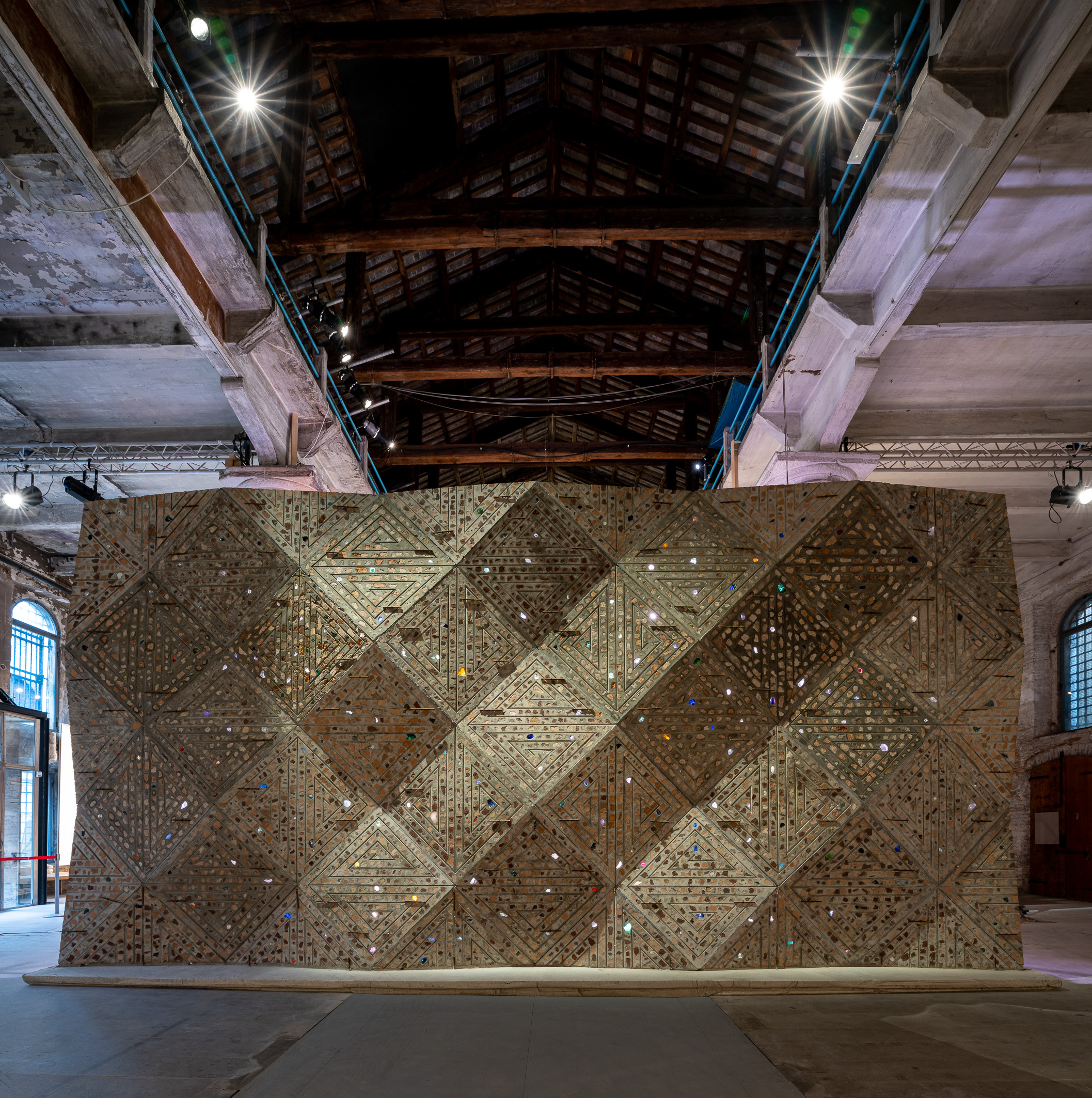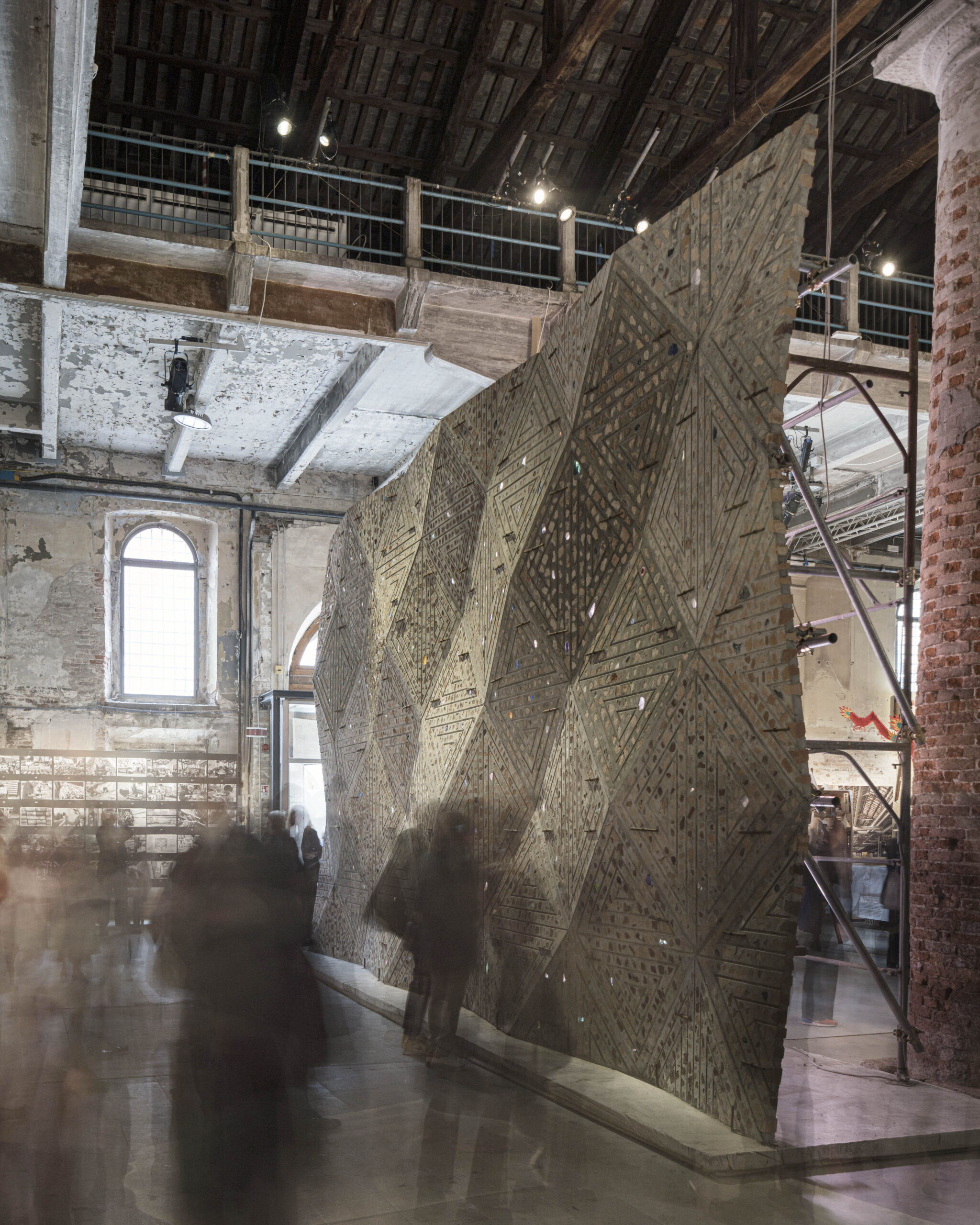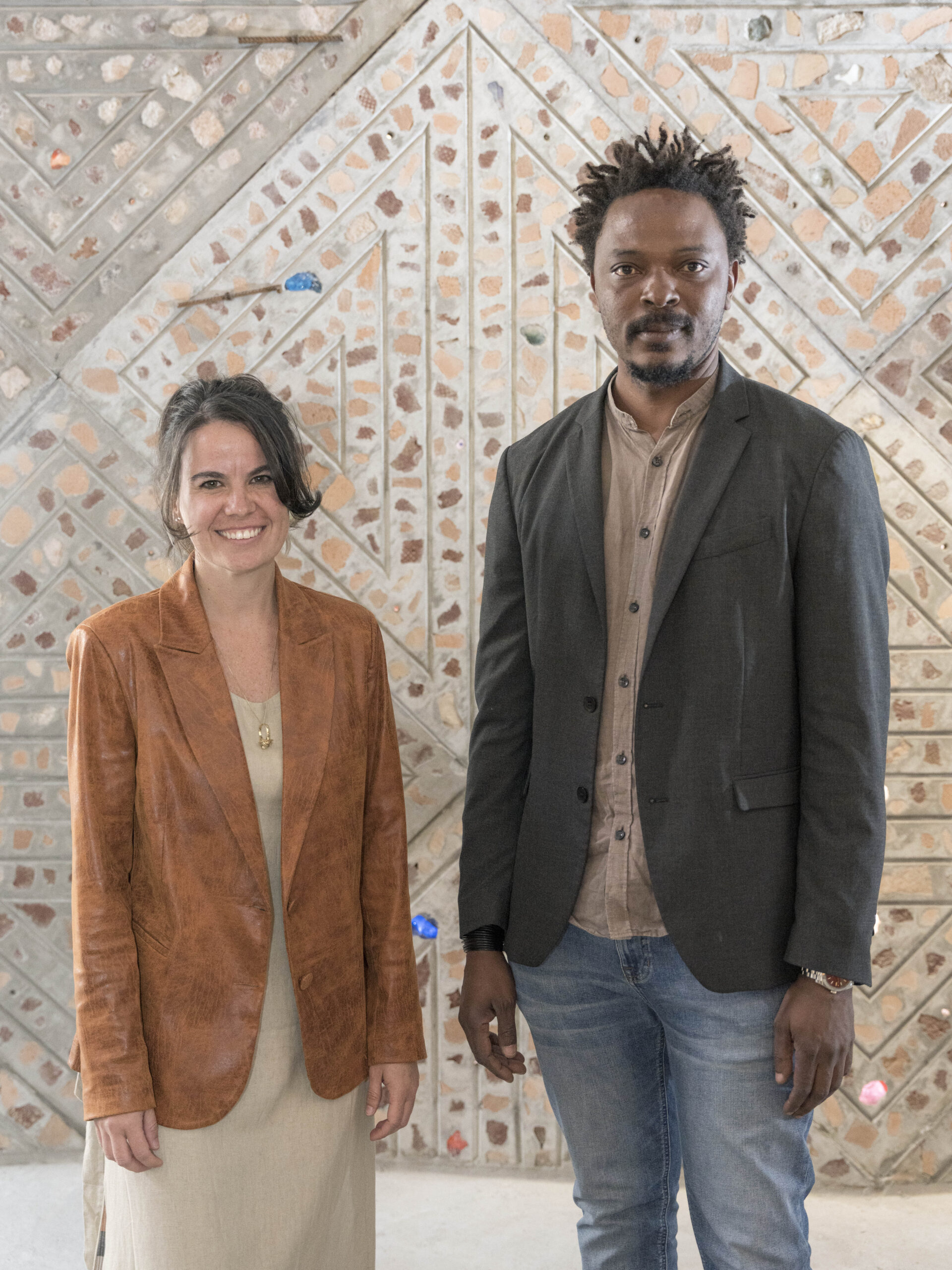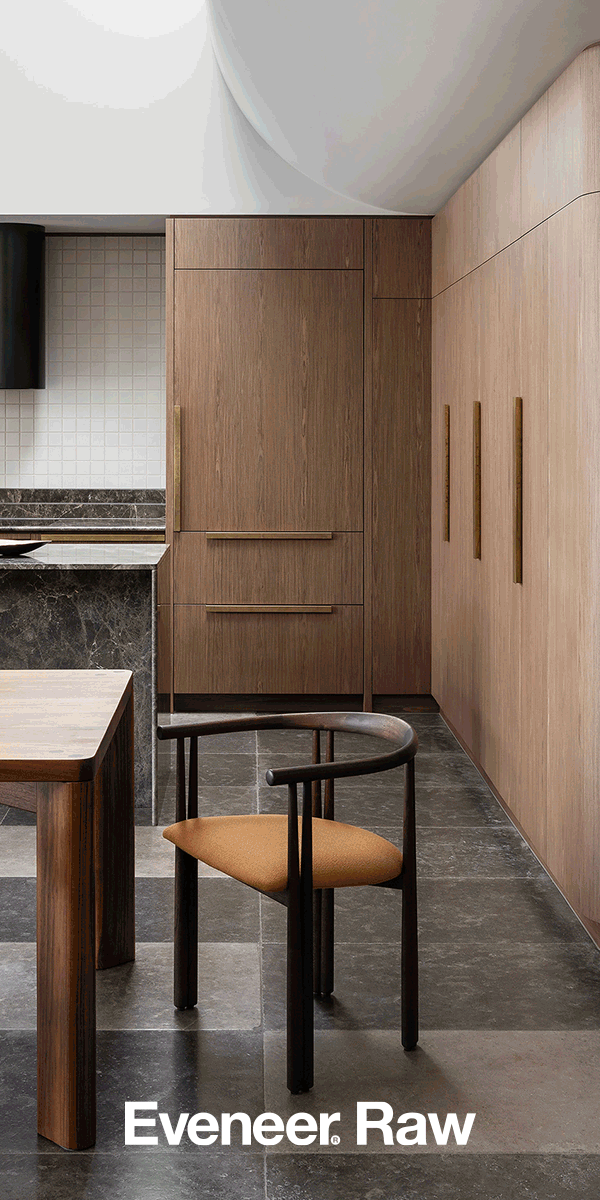Architects David Neustein (Other Architects) and David Welsh (Welsh + Major) discuss the pragmatics and aesthetics of Australian cemetery design....
Debris of History, Matters of Memory
An arresting structure that weaves a tapestry of bricks, drawing from the complex and violent history of transatlantic trade in order to imagine new futures.
Essay
Caitlin Condon
Photography
Andrea Avezzù

A tapestry, in its essence, weaves together distinct, individual threads to form a unified image of visual clarity. Gloria Cabral and Sammy Baloji’s transmedial brick tapestry Debris of History, Matters of Memory, for the 18th Biennale Architettura di Venezia 2023, does just this. The work reveals the geographical arteries of colonial occupation and mineral and cultural extraction that connect Brumadinho in Brazil and Katanga in the Democratic Republic of Congo (DRC) – two territories that also occupy the focus of the creators’ respective architectural and artistic practices.
Partner of Gabinete de Arquitectura studio, Cabral is a Brazilian-born architect who lives and works in Paraguay and Brazil. Her practice focuses on the ruse of demolition material to highlight the industry’s mass consumption of natural resources and the damaging effects of mining. Baloji is an artist born and raised in Lubumbashi, known as the mining capital of the mineral-rich Katanga province, and now works between Lubumbashi and Brussels – the DRC’s former Belgian metropolis. His work examines the colonial heritage of central Africa, interrogating urban architecture and human bodies as archives of memory and historical witnesses of social power. The pair’s creative alliance was borne of the Rolex Mentor and Protégé Arts Initiative, in which they both participated in 2014–15. This mentoring program offers emerging artists the chance to engage one-on-one with masters in their field for an extended period. It is built upon the belief that art and architecture form a continuum, representing an accumulation of past experiences and generations. It also recognises that all artists and architects
draw inspiration from those who preceded them.
“The installation,” Baloji explains during our conversation, “talks to the history and continuation of exploitation in all senses, starting with human slavery and the extractivism of cultures and minerals that is still present today.” Construction debris and mining waste form an arresting architectural tapestry, arranged in a display of cultural motifs that reflect the textile traditions of the historical Kingdom of Kongo and Indigenous peoples of Brazil. The transmedial structure becomes an archaeological artefact that threads together historical and contemporary narratives of extraction and exploitation. Slaves from the Kingdom of Kongo were exported to the Dutch-Brazilian colonies to work alongside Indigenous Brazilians in the extraction of minerals – an industry that continues to endanger the livelihoods of Indigenous peoples and the environment today. Venetian glass, collected from dumps on Murano Island, penetrates the wall with colourful adornment and references the port city’s prominent role on the transatlantic stage, playing host to the trade of glass, textiles and slaves. The inexhaustive presence of resource consumption is captured in the bricks Baloji made, mixing clay and the residue of coal extraction from Brussels.
This archival catalogue of extractivist ideologies and colonial scars brought together through the gesture of a wall is based on the tapestries used as diplomatic gifts during the transatlantic trade. The installation was conceived in conversation with art historian Cécile Fromont, the result of a shared interest in the Tenture des Indes of the Villa Medici in Rome. Woven in the 17th century by French manufacturers Royale des Gobelins, the collection of eight tapestries captures scenes of Indigenous Brazilians and slaves from the Kongo working in the Dutch colonies of Brazil. Sourced from more accurate portraits gifted to King Louis XIV by the Dutch Governor-General,2 the French tapestries heightened the exotic extravagance of these scenes of colonial exploitation and their Indigenous and Black subjects. It is representative of a stylistic manipulation common to Europe’s ‘cabinet of curiosities’ fetish and the pageantry of diplomatic gestures.
The Kingdom of Kongo shared in this tradition of gifting tapestries at a time when they were powerful participants in the transatlantic trade. Between the 14th and 15th centuries, the Kingdom of Kongo and the Kingdom of Portugal established trade relations of mutual benefit and respect, securing their position as the lynchpins of trade between the African and European continents. Historical letters show records of the tapestries gifted by the King of Kongo to the King of Portugal, with only a few in existence today.3 However, as the transatlantic slave trade began to dominate, the Kingdom of Kongo lost power and eventually collapsed. As bodies and their cultural reservoirs were extracted from Kongo, textile traditions were also lost and eventually replaced by European technologies and techniques. In our conversation, Baloji explained that “it’s difficult [now] to produce these kinds of tapestries in Africa.” As a nod to this lost tradition, he notes, “I wanted to transpose these textile motifs onto different materials – architectures.”
“We began to imagine how we could transform a tapestry of cloth into a tapestry of bricks – a three-dimensional, self-supporting structure,” explains Cabral. This three-dimensional form was found through a tessellating arrangement of triangles, folding horizontally and vertically. Each triangular inclination is perfectly counter balanced by the corresponding triangle above, resulting in a self-supporting equilibrium requiring only two tension points from the top of the final form. The decision to leave the installation scaffolding in place came from the wall’s unique form and material content. The scaffolding will be removed in the Biennale’s finale to show the wall working alone. The medium of the tapestry is also present in the dialectic relationship between the front and back of the wall. The front-presenting side, with its refined detail and ornamental patterns, celebrates the captivating beauty and cultural value of African and Indigenous textiles. As Cabral described, “when you see people interact with the wall, they go right up to it and want to touch it. This is the energy of the wall. It is not only about having an intelligent and technical structure; it is also about the immense care and love imbued in the wall, which reaches out to people.” The back, in comparison, echoes the knotted tangle of textile tapestries. Spotlights illuminating the coloured glass from behind also expose the debris’ rough texture and irregular forms. As Bajoli explained, “the backside reminds us of the history of these materials, that they are recycled waste. Waste that is coming from the consumption of natural resources and waste that speaks to Black narratives and the pervasive influence of transatlantic trade.”
True to Lesley Lokko’s curatorial intent, the collaborative installation engages in a laboratory of practices and ideas for a reimagined future. Both sides of the transmedial tapestry work together to present an inclusive and reparative image, one that re-claims the aesthetic and archaeological value of recycled materials and neglected histories to form and inform the architectural and social structures of our future.

18th International Architecture Exhibition of la Biennale di Venezia. Gloria Cabral and Sammy Baloji sculpture at the Arsenal

18th International Architecture Exhibition of la Biennale di Venezia. Gloria Cabral and Sammy Baloji in front of the artwork they designed

